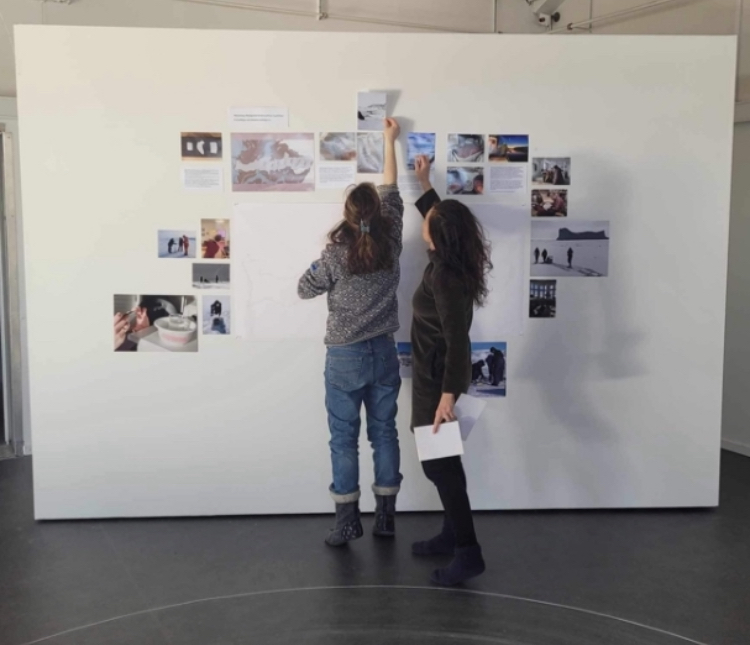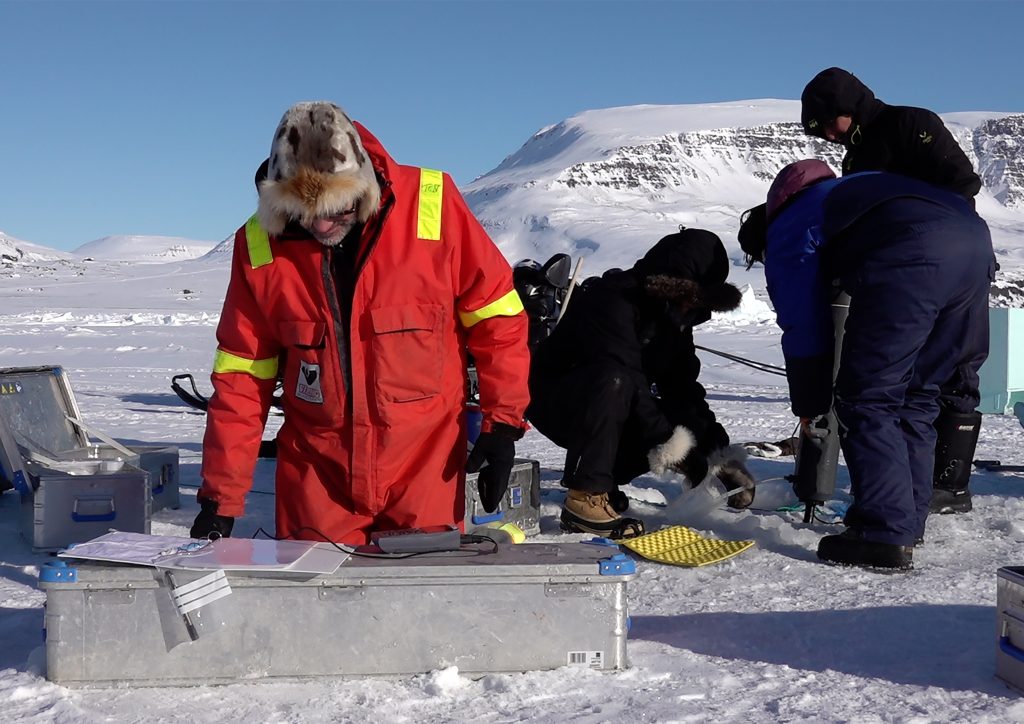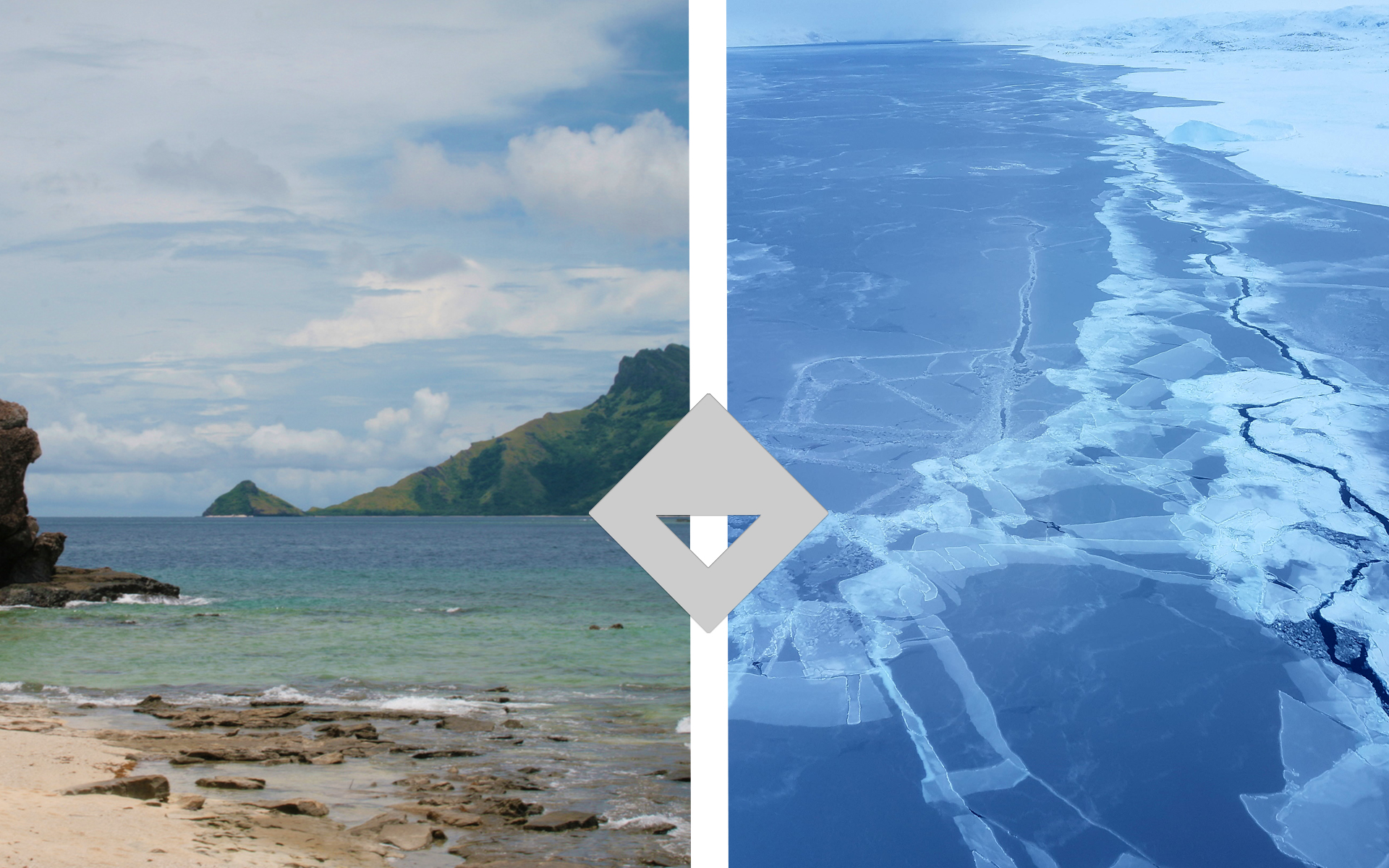ARCTIC LABORATORY took place in March 2024 throughout a period of four weeks. During these weeks drawing workshop activities, film recordings and conversations with locals from Ilulissat and Qeqertarsuaq formed the basis for process-oriented but site-specific studies of Arctic imagery and climate change. At the core was an exchange of Arctic experiences through art, science, drawing, and filming climate stories with people in Ilulissat (Greenland), marine biologists in Qeqertarsuaq (Greenland) in cooperation with Climate Narratives (Ilulissat/Norway) – an international large-scale research project and network.

Prior to stay in Ilulissat and Qeqertarsuaq we – Janne Breinholt Bak, Eva la Cour and Torkel Gissel Nielsen – each brought an element to the ‘laboratory’. Eva la Cour had brought three developed Super 8 films from last year’s fieldwork at the Arctic Station. Torkel Gissel Nielsen presented three large prints of copepods of the genus Calanus hyperboreus, and Janne Breinholt Bak brought her map drawings of the nations’ claims to the seabed at the North Pole. Common to all elements was our interest in talking about how Arctic climate change research and artistic practices can connect to people living in the Arctic.
In the laboratory, physically embodied by ILLU Art & Science Hub, we collected photographs and video- and film stills both from our stay in 2023 and this year, a drawing of the retreat of the ice sheet in the Icefjord (Ilulissat) throughout centuries and local stories about how climate change affects people’s everyday lives. At our research workshop, the students from a local primary school class (7.b) drew marine animals from the Arctic Sea, based on a presentation about the ocean’s food chain by Torkel Gissel Nielsen. The drawings eventually came to form a frieze at ILLU. Effectively, interesting connections were made between different elements in the exhibition at ILLU, giving rise to new conversations to emerge.
Based on the exhibition production and workshops at ILLU, conversations have led to collaborations between ILLU/the group Arctic Laboratory and local schools as well as individuals in the neighborhood. In addition, steps have been taken towards establishing a network and future projects with other culture producers in the field of socially engaged art and art & natural science collaborations – both in Ilulissat and at Arctic Station.
The intention is to continue the process oriented and investigative formats that characterizes our work so far, and to draw from the experiences gained. We thus intend to return to Ilulissat and Arctic Station already in March 2025, but with a broader impact as part of the above-mentioned Nordic network.
The most valuable experience in the case of this project has been the deepened understanding of how climate science issues and discourses are locally perceived and worked up against. The workshops, interactions and presentations hosted at ILLU allowed for both formal presentations and informal conversations. These revolved around topics pertaining to how environmental awareness connect with the importance of awareness towards socially sustainability. A particular focus was that which is perceived as experiences of climate change in the Nordic region. During the opening of our exhibition, it was thus important for us to facilitate a space for interactions. Here conversations and negotiations of that which is imagined as the Arctic and a Danish-Greenlandic relationship also had prominence.



Fieldwork at Disko Bay and setting up the Arctic Laboratory at ILLU. Photos: Arctic Laboratory
By connecting artistic practice, natural science and local anecdotes, we were able to produce new perspectives to the nature-culture metabolisms at stake in a changing Arctic. Our process-driven cross disciplinary approach, involving both young and elder local people from Ilulissat, allowed different kinds and scales of awarenesses of climate change in the Arctic area to connect.
The ‘open house’ format at ILLU, to which we invited via local social media networks, aimed at facilitating an inclusive space. Centered around accessible-for-all-activities such as drawing, coffee, and waffles, the events at ILLU showed to attract a wide range of both children grownups, men and women, permanent and temporary locals (primarily with Greenlandic and Danish backgrounds).




The residency, collaboration and exhibition activities at ILLU and at Arctic Station feeds an ongoing cross-disciplinary conversation, that will continue forthcoming. Based on our joint experiences, we are now in the process of formulating a larger and more long-term project. This will include a return to Ilulissat and Arctic Station to build on the relations with locals already established and the sensitivity with gained to the issues, tensions and frictions at stake in temporary site-responsive arts projects.
We want to thank Nordic Council of Ministers and Statens Kunstfond for supporting Arctic Laboratory in this exciting residency.


